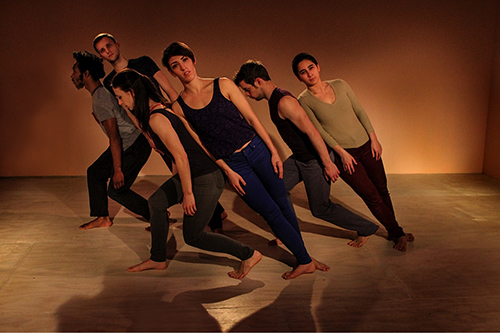Translate Page

Jody Oberfelder turns biology into art
---
While big-budget extravaganzas and classical dance are firmly planted uptown, it can seem like the world of downtown dance--the one that inspires awe with its inventiveness---has gone the way of the landline.
But fear not: The avant-garde's heart is thumping quite loudly in 4CHAMBERS, a new dance-theatre piece from Jody Oberfelder.
Running through March 22 at Williamsburg's Art@Renaissance, 4CHAMBERS asks audience members (12 per performance at most) not only to share physical space with the performers, but also to engage in myriad activities themselves, providing an opportunity to explore the most intimate subject of all: the heart.
"When you see dance on a proscenium stage, you watch and are dazzled," says Oberfelder. "You feel connected in a way. But I always wondered: How does watching dance physically affect someone---affect their heart? That's the point of the immersive aspect. Since each audience member is personally led by a dancer-docent who engages with them, the individual is truly connected to the performance when the dancer dances or when they join in [themselves]. I was hoping to find out: How and why is the heart a metaphor for love and life? Can you go through the chills and spills of the performer yourself as an audience member? And most importantly, how are we moved by something?"
Throughout the hour-long performance, each patron is led by a dancer-docent through four veritable heart chambers, connected by veins of hallways. The rooms contain a mishmash of experiences: a free-form dance party, a learning lab filled with books and videos, and spaces to watch long phrases of Oberfelder's athletic choreography performed at close proximity. (The movement includes complex partnering with massive lifts and pendulum kicks, and daring jumps off walls). There's even a room where spectators wear heart monitors while they answer existential questions asked by an on-screen, interactive narrator. Throughout, the dancer-docent often takes a moment to place a hand on the watcher's heart or rest the watcher's hand on his or her own chest.
For Oberfelder, this is the latest iteration of a long-time fascination. In an earlier piece, Throb, dancers wore heart monitors onstage. Oberfelder knew she wanted to take the idea further in a way that would immerse the audience, but at first, she wasn't sure how. "My process is usually just to create movement in the studio," she says. "But I had to figure out how to move an audience member and see how people can feel different connections. I knew I had to change my approach."
So the Detroit native delved into both medical and figurative literature about the heart, its connection to the brain, and the idea of its emotional resonance. Then she spent time with assistants Michele Jongeneel and Jake Szczypek in the studio. "Right away, we tried to explore how one person, the dancer, could make someone else go inside their body," Oberfelder says. "But to pretend one of my assistants was not a dancer was a feat, because dancers have natural somatic awareness and training. So we went back and forth leading each other and learned what scary territory we were in---what it's like taking someone else into their own awareness. It borders on very touchy-feely, hippy stuff, and I didn't want to go there. I wanted to bring someone else into her own presence. Every good piece of art should connect you like this, but I wanted to do so on a more intense level."
Oberfelder also changed her routine when choosing dancers. Instead of picking athletic dynamos, she turned to more "earthy and sinewy" performers who could handle the intimate nature of the interaction. "It's seductive to see gorgeous thoroughbreds when I look for dancers," she admits. "But I now pick people who have the ability to listen to others and to instinctively listen to the audience, without following a script that they don't---and won't---have. They are individuals with depth and mystery, and when you see someone like that, you want to find out more."
But while she had the right dancers, Oberfelder wasn't certain she'd find a space that would accommodate her vision. When she was accepted as a presenter at Governors Island last summer, the piece began to take clearer shape. "We built that space, scraping paint off the ceiling, making four environments with the back service stairway as the arteries," she recalls. "But performing in broad daylight in summer heat wasn't as theatrical as I had envisioned. After Governors Island I could literally see four rooms with arteries and kept looking for a better space."
That turned out to be Arts@Renaissance, which has now been transformed into a pulsing organ. After many shows, notes, and tweaks, the dancers have taken ownership of the piece, many of them commenting how fulfilling it is for them artistically and personally. This isn't surprising, as it seems the experience is intensely intimate for everyone involved: When a dancer looks you in the eye, places their hands on your shoulders, and without speaking, breathes with you, there's nowhere to hide and nothing to do---except to feel your own heart.
---
Lauren Kay is a dancer and writer based in New York City
Photo by Julie Lemberger